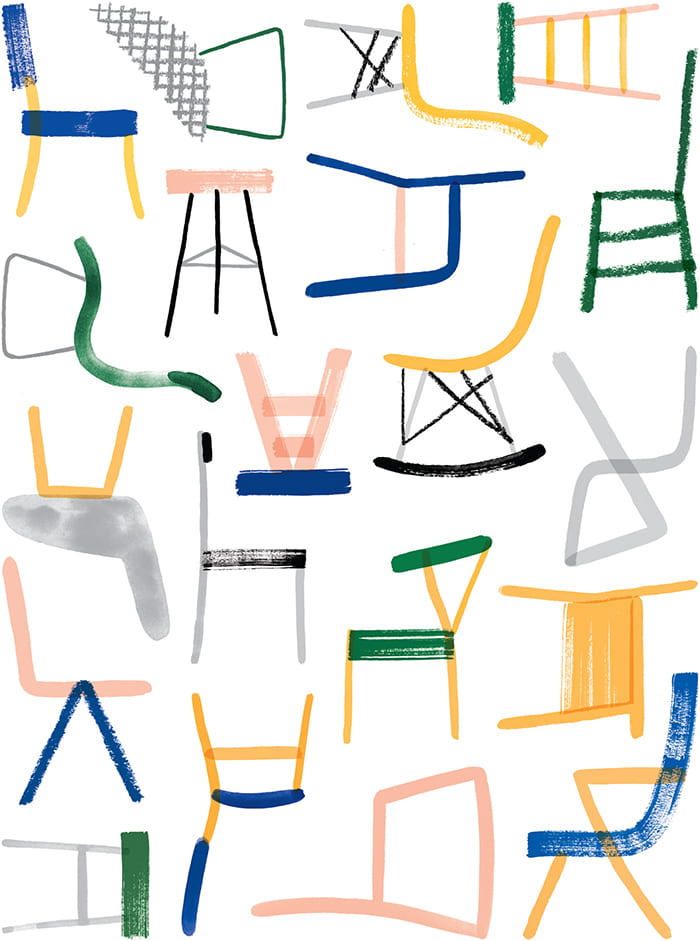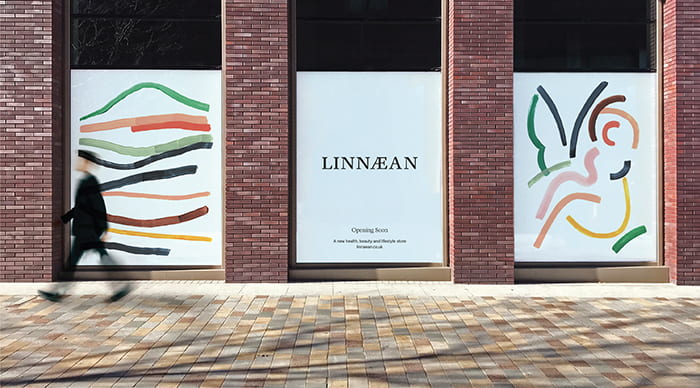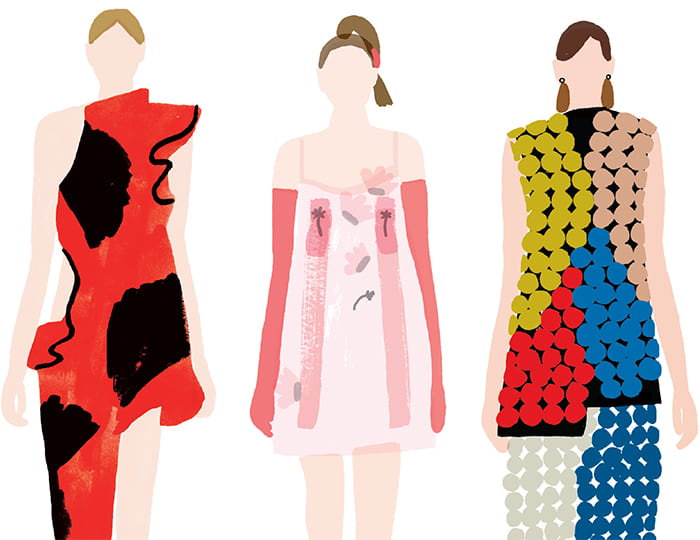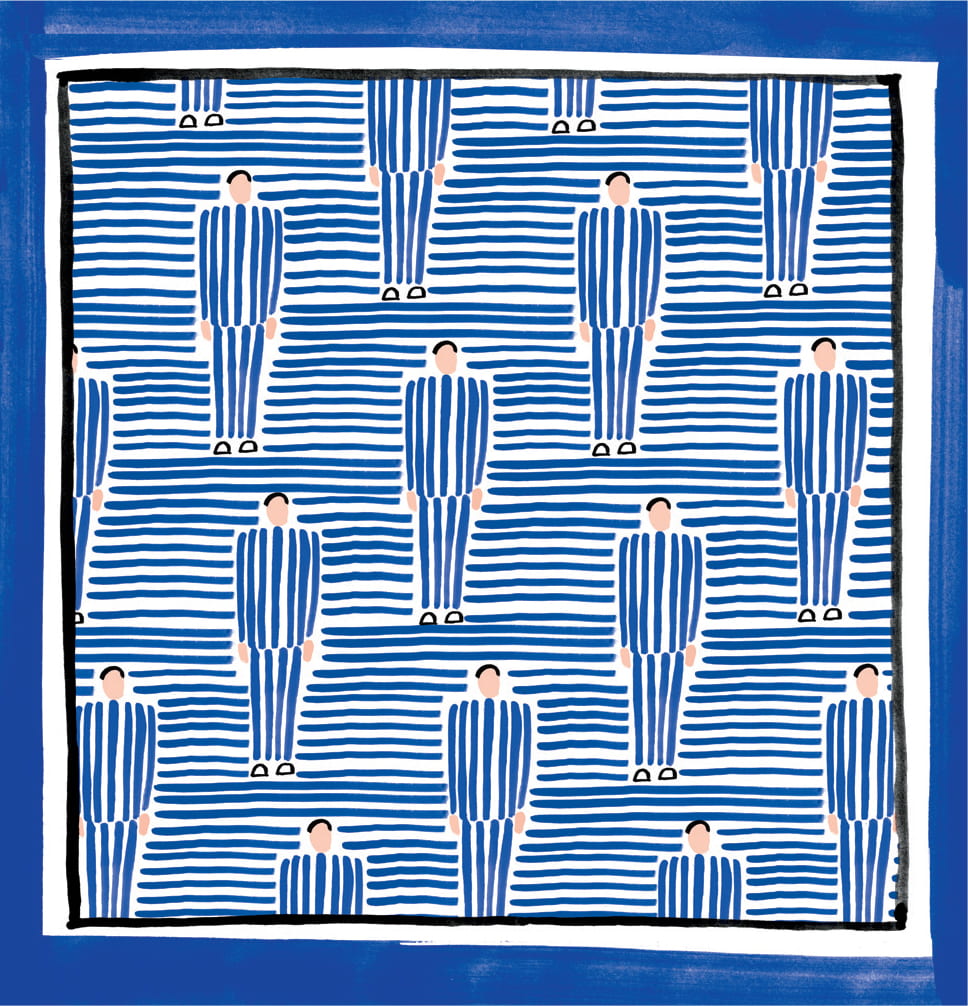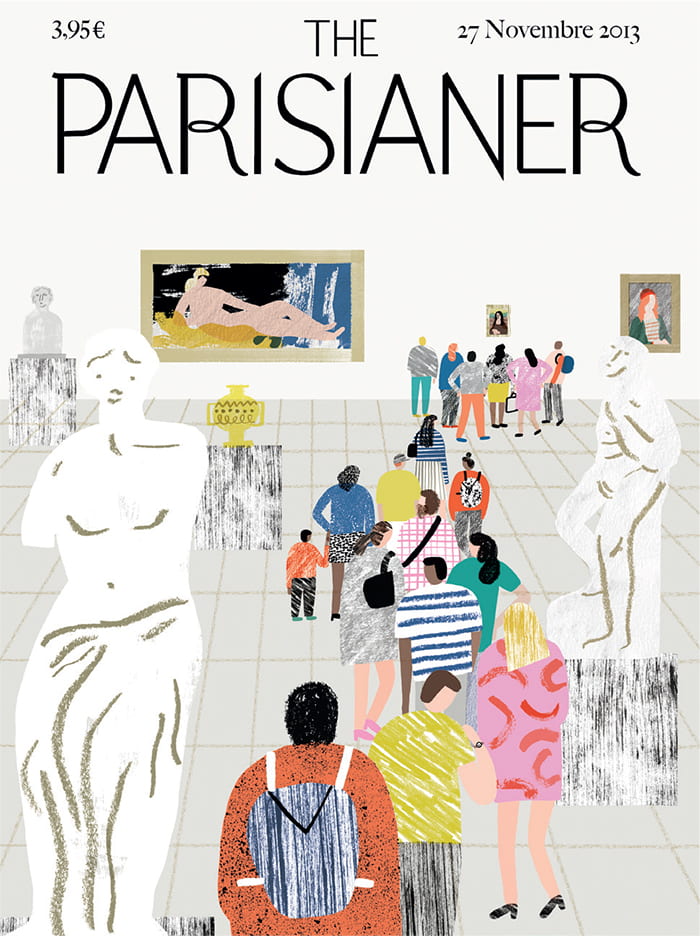ALUMNI: DESIGN/FASHION/PUBLISHING
CHARLOTTE TROUNCE
We talk to Charlotte about the diversity of her freelance illustration commissions and the creative challenges of illustrating everything from a small puzzle for children to a large architectural façade.
Q: Your illustration commissions span a broad range of platforms, including packaging, games, puzzles, clothing, fashion illustration, architecture and animation, as well as more traditional forms of print such as editorial illustration, publishing, design and advertising. Are there any particular platforms that you enjoy more than others?
I feel very lucky to have a style of illustration that is adaptable to a wide range of commissions; it has definitely kept things interesting for me and I can’t imagine working on just one type of project now. I’m not sure that I have a preference over one platform to the next; it’s the variety that I enjoy. I love that one week I might be working on a book project and the next week a brand design commission.
Q: Across these different platforms, you have been required to produce illustrations for very different sizes and shapes, from large-scale on-site designs for buildings to small packaging designs, and for two dimensions and three dimensions. What impact does the size, shape and format of an illustration have on your working process?
I don’t think the way I approach the design of an illustration ever changes, whether it is small or very large; the method of creating a composition is exactly the same each time. It is the physical making of the work that can become more complicated and time consuming with larger illustrations, and I’m still trying to find a way of retaining the same painterly qualities of my work for larger scale commissions. This can involve working more digitally with vector-based techniques, or can also simply involve scaling up the size of the brush I’m painting with. It can be helpful to have a 3D mock up/object in front of me when possible if I’m designing for 3D projects, so that it’s easier to visualise how the illustrations will work. Often though, the designers I work with will create an initial mock-up for me, using existing illustrations, to give me a good sense of how they’d like my work to look in a particular design and layout.
Q: You have had a lot of art related commissions for children, including your own Barbican ‘Charlotte Trounce Collection’ of games, puzzles and activity sheets connected with Barbican exhibitions, ‘My Modern House’ sticker book and ‘My Art Teacher Mr Picasso’ activity book. How important do you think physical books and games are as a platform to introduce art to children and engage them in the subject?
I think engaging children in art is incredibly important, but can be challenging at times, particularly when it comes to exhibitions that are largely designed for adults. This is why I think that creating resources for children to pick up and interact with whilst looking at art and design is essential. If, through these kinds of resources, a child likes and remembers even just one piece of art they have experienced, then the product is a success! It’s been great working on projects that introduce young children to themes such as architecture or design that are widely reserved for teenagers and adults and I hope that books like ‘My Modern House’ will inspire a new generation of architects and designers! There can be challenges associated with developing children’s books on famous artists. My activity book, ‘My Art Teacher Mr Picasso’ was not actually published due to permission issues from Picasso’s estate!
Q: You have had many commissions involving play and interactivity for children, such as the above interactive books, games and puzzles for the Barbican, and ‘Michael Rosen’s book of Play’ and corresponding ‘Play Well’ exhibition. How do you develop ideas for activities and how do you evaluate what will be engaging for a child? How much art direction and personal freedom did you have for these projects?
Sometimes projects like these have a team responsible for coming up with the activity ideas, but on other occasions, I’ve had to create the ideas myself. I tend to think back to my childhood and the kind of art activities I enjoyed then, whilst also considering the ways I create my work now. A big part of my work is about mark making, so I enjoy designing activities around this. Although it’s harder to engage children in these kinds of hands on activities, given that there are many very clever exciting digital options available, I still think they can be very effective and offer a different kind of tactile experience.
Q: You have been involved in various art-based workshops. What do you enjoy about the different creative experience this offers, in terms of working directly with other people (in contrast to freelance illustration, which can be solitary)?
I think the way children draw and make art is fascinating and the naivety of the marks they make has always been something that has inspired my own work. So leading creative workshops, particularly with children, is always fun and I feel like I can learn as much from them as they do from me.
Q: You have had various different kinds of exhibitions, some connected to book commissions as well as exhibitions of personal work. What role do exhibitions provide for you?
Working on personal projects and beginning to exhibit this work has been exciting and definitely nerve-wracking at times. It’s vital in the continual development of my style though and it’s great when personal projects are noticed by clients who would like me to work on something similar for them.
Q: You have worked on various Fashion Illustration projects. How does your working process differ in this context? How much art direction is there in terms of the image and identity you are required to project about a designer’s work through your illustrations?
For most of the fashion illustration projects I’ve worked on, my role has been to interpret an outfit or collection in my own style, whilst still highlighting and enhancing the most important details: the fabric, pattern, textures etc. This direction is very similar to the way I approach illustrating in general.
Q: Shape and pattern are distinctive features of your visual language, and ‘shape’ as a subject seems to be an important recurring theme in your work. Although your commissions are broad in terms of context, platform and scale, shape seems to be a unifying aspect. Can you tell us about your interest in shape?
Whatever the context or scale of my work, my aim is always to illustrate what I see in the simplest way, whilst still enhancing the best qualities of the object, which is why shape is so important to my work. Whether I’m drawing a tree, a building or a person, I’ll observe and draw it as a series of shapes and colours initially and add further detail where necessary later on.
Q: You have recently been taken on by ‘Dutch Uncle’ Illustration agency, who represent some very high profile illustrators. What are the benefits of this working relationship? What type of commissions would you like to be involved in in the future?
I signed with Dutch Uncle largely for the support I’d have managing and pricing commissions that come in, which even after working in the industry for eight years is still complicated! I also hope that having an agent will open my work up to more commissions abroad, particularly in the US and perhaps to the more high profile jobs that are harder to come by! By Dutch Uncle taking over some of the project management and admin jobs (which are very time consuming!), I hope it will free up some time for developing personal projects.


